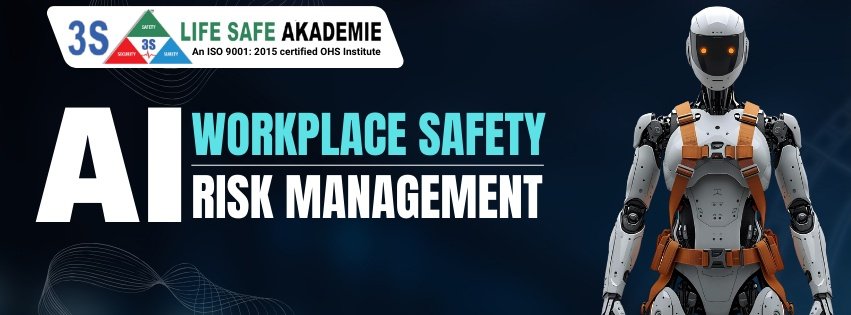
Posted by:- Sushant Mishra
20-09-2025
In today’s fast-moving industries, workplace safety is no longer just about following rules—it’s about prevention, prediction, and proactive action. Health, Safety, and Environment (HSE) practices form the backbone of safe operations in sectors like oil & gas, construction, mining, and manufacturing. Yet, despite strict regulations, accidents, environmental hazards, and occupational illnesses still occur.
This is where Artificial Intelligence (AI) steps in. From predictive analytics to computer vision, AI is transforming how organizations identify hazards, prevent incidents, and manage risks. In recent years, AI adoption in workplace safety has reached a turning point, making safety systems smarter, faster, and more reliable than ever before.
This blog will explore how AI is revolutionizing workplace safety and risk management, the benefits it offers, the challenges it faces, and what the future looks like.
Artificial Intelligence refers to computer systems designed to perform tasks that usually require human intelligence—such as learning, reasoning, and decision-making. In HSE, AI helps companies:
Traditional safety methods, like manual inspections and paper reports, are reactive—they often identify risks only after an incident has happened. In contrast, AI enables predictive and preventive safety, reducing accidents and creating safer workplaces.
Risk management is central to HSE. Organizations invest heavily in identifying hazards, conducting audits, and preparing for incidents. With AI, these processes are becoming smarter and more efficient.
AI algorithms analyze both historical and real-time data to forecast risks. For instance, if machinery shows abnormal vibration levels, AI can flag a possible mechanical failure before it occurs—preventing accidents and costly downtime.
AI-enabled IoT sensors monitor conditions such as air quality, noise levels, temperature, and chemical exposure. These sensors send instant alerts when hazards arise, ensuring quicker responses.
AI dashboards provide clear insights, helping safety managers focus on high-priority risks and allocate resources effectively.
AI’s biggest advantage is its ability to detect unsafe conditions and behaviors before they cause harm.
Smart helmets, vests, and wristbands with AI sensors can track worker fatigue, stress, and PPE (Personal Protective Equipment) compliance. For example, if someone enters a restricted zone without a helmet, the system issues an immediate alert.
AI-powered cameras detect unsafe actions such as working without PPE, improper lifting, or entering restricted zones. Unlike human supervisors, these cameras monitor continuously, without fatigue.
AI-driven drones inspect confined spaces, tall structures, and hazardous environments. This reduces risks for workers while improving data accuracy.
Compliance is mandatory but often resource-heavy. AI simplifies the process by automating much of the work.
By handling repetitive tasks, AI allows safety professionals to focus on proactive risk management.
HSE also covers environmental protection. In 2025 and beyond, AI plays a critical role in sustainable safety practices.
By combining AI with sustainability, industries achieve both safer operations and environmental responsibility.
While AI offers clear benefits, challenges remain:
Overcoming these challenges requires strong leadership, employee engagement, and clear regulations.
Looking ahead, AI will continue to evolve, offering even more advanced safety solutions.
AI won’t replace safety professionals—it will empower them to make better, faster, and safer decisions.
AI has moved from theory to reality—it is now a powerful, practical tool for revolutionizing workplace safety and risk management. By predicting risks, preventing accidents, ensuring compliance, and supporting sustainability, AI is shaping the future of HSE.
Companies that adopt AI today not only protect their workers and the environment but also build a competitive advantage. The future of safety is here, and it is powered by AI.